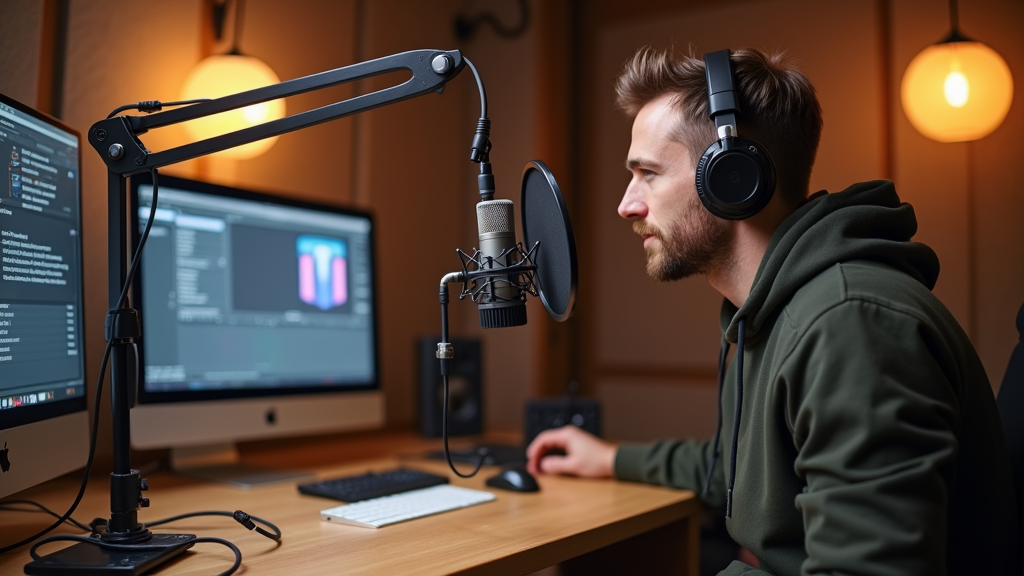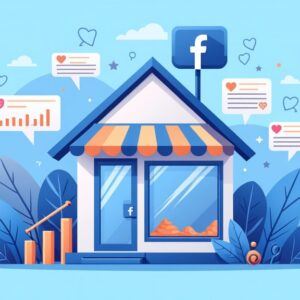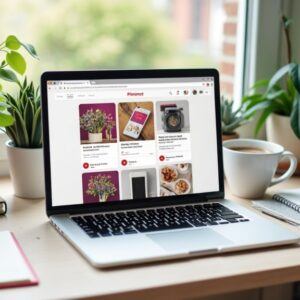Getting a podcast up and running can feel like a serious maze, especially if you’re brand new to all the gear and software options out there. Knowing which podcast equipment you actually need and which ones can wait, makes life a whole lot easier when you’re building your studio, even if it’s just a corner of your bedroom. I’ve spent tons of hours helping friends start podcasts, and I’m wrapping up all that experience here to save you headaches and hours of research.
What You Really Need to Start Podcasting
Podcasting equipment has exploded in both quality and affordability. You don’t have to build a professional studio on day one, but picking the right essentials seriously bumps up your sound from amateur to polished. The market for podcast gear is packed with everything from entrylevel USB mics to suites of audio software. If you ever want to grow your show, starting with solid, reliable tools just gives you more options down the line.
The basics haven’t changed much: you’ll want a microphone, headphones, editing software, recording software, and a hosting platform. Over time, a pop filter, audio interface, and maybe some acoustic panels will become your friends. Each tool has its strengths, quirks, and sometimes even affiliate programs that let you share recommendations and earn a little extra (worth it if you love this stuff).
Turn Your Passion into Earnings
Get the Tools, Training and Support you need. All in One Place
Join a a Vibrant and Global Community of
Marketers and Entrepreneurs from Around the World
Key Gear Every Podcast Setup Needs
The first piece of advice I always give: don’t overthink it, but don’t cut corners on sound. Here are the key pieces of podcast equipment you’ll want as a beginner, with a few favorites and realworld pricing to set your expectations.
- Microphone: This is the heart of your setup. Put your money here first. If you’re on a tight budget, a USB mic is the way to go. If you’re ready to dabble in higher audio quality, look for XLR mics (just be aware you’ll need an interface).
- Headphones: Closedback headphones help you hear exactly what’s recording, so you avoid weird echoes or background sounds. They’re also a savior if you edit your stuff yourself.
- Podcast Recording and Editing Software: You’ve got lots of choices: Audacity (free and opensource), Adobe Audition (paid), or simple browserbased recorders like Zencastr or Riverside.fm. Many offer affiliate programs, especially the paid ones.
- Audio Interface (Optional for USB, Required for XLR): This device links microphones to computers. If you’re just using USB mics, you may not need this yet.
- Pop Filter/Windscreen: Blocks out plosives (those sharp “p” and “b” sounds) to clean up your voice.
- Acoustic Panels or Foam: Helps stop your room from sounding like a shower stall if you’re recording in a basic space.
Quick Recommendations: Podcast Microphones
A good podcast mic will make your voice sound fuller and break up less from background noise. Here are a couple of wellrespected picks you can find on Amazon (and, if you use affiliate links, you can share these with friends and earn a little change):
- Audio-Technica ATR2500xUSB – Priced around $80-99. This one is popular for live streaming and beginner podcasts alike. It can plug into either USB or XLR, so it grows with your skills. Check it out on Amazon.
- Shure SM58 – Rocksolid legend in the audio world. Priced around $100. Needs an audio interface but sounds great for almost any voice. On Amazon.
- Blue Yeti – Famous USB mic, around $110-130. Super easy for total beginners but a bit sensitive to background noise. Strong affiliate program too. View Amazon listing.
For each of these, you’ll find hundreds (if not thousands) of reviews pointing out their strengths and quirks, which is pretty handy if you want a second opinion or audio samples.
What About Headphones and Audio Interfaces?
You don’t have to buy super expensive headphones. You just need a pair that won’t leak sound back into your mic, so closedback is key. Here are a few shortlists to check:
- Audio-Technica ATH-M20x: Basic but reliable, $50-60 on Amazon. Amazon link.
- Sony MDR7506: Studio standard, around $95. See on Amazon.
For audio interfaces, the Focusrite Scarlett Solo is a classic starter (about $120), just right for one or twoperson shows. Shop on Amazon.
Podcast Recording and Editing Software: The Options
Most podcasters don’t need fancy recording gear; just a stable computer and solid software. Here are some that are super useful and recommended by many pros:
- Audacity: Totally free, works on Windows/Mac/Linux. Great for basic editing. Only downside is the slightly dated interface.
- Adobe Audition: Around $20/month, but you get worldclass editing features, and chances to earn via their affiliate program if you recommend it to other creators.
- GarageBand: Free for Mac users. Surprisingly powerful for a builtin tool.
- Descript: About $12-24/month. Combines automatic transcription and editing. Has an affiliate program.
- Riverside.fm / Zencastr: Browserbased multitrack recorders with automatic backup. Super useful for remote interviews. Both have affiliate programs.
My goto for most shows is still Audacity for simple projects, but if you want advanced features like noise reduction or Adobe’s powerful cleanup tools, Audition is worth checking out. Descript is especially helpful if you record interviews and need fast transcriptions or plan to turn your podcasts into blog posts.
Extras That Make a Big Difference
- Pop filter and boom arm: A $10-20 pop filter and an adjustable boom arm (about $30-40) save your audio and your back. Basic pop filter on Amazon, Boom arm option.
- Foam panels or portable isolation shields: Room echo is the enemy. For $25-$50, a few foam panels or a small reflection filter can make your voice clearer. Acoustic foam on Amazon.
- Hosting platforms: Buzzsprout, Podbean, and Libsyn all host podcasts, and most offer affiliate rewards for signing up people through your link. Expect to spend $5-$20/month starting out.
Real-World Setup Examples and Tips
If you’re recording solo interviews at home, a dynamic mic like the ATR2100xUSB, paired with closedback headphones and foam panels behind your computer, is all you really need. If you’re running a multiperson show or recording onthego, adding a compact mixer like the Rodecaster Pro helps manage sound levels and effects.
The pros tend to use a combo of analog gear (XLR mics, mixers) and dedicated quiet spaces. But for 95% of indie podcasters, it’s about finding a comfortable, consistent setup that you can use without fuss. Start simple, test often, and upgrade as you figure out what bugs you most. Maybe it’s fan noise, echo, or just a creaky chair.
Pros, Cons, and Pricing at a Glance
- USB Mics: Cheap, plug and play. Can pick up more room noise. Great for beginners.
- XLR Mics: Higher audio quality, but you need an audio interface. A great longterm investment.
- Editing Software: Free options exist but may be less intuitive. Paid ones have better features and support.
- Physical Upgrades (Pop Filter, Boom Arm, Acoustic Foam): Affordable and really impactful. Usually under $50 per upgrade.
- Hosting: Small recurring cost but absolutely required to get your podcast out to Apple, Spotify, and more platforms.
Takeaways: What to Focus on First
Don’t sweat having everything perfect from day one. Here’s what matters most:
- Focus on a decent microphone first. It makes the biggest difference.
- Editing software can be free or paid, so pick what’s easiest and least distracting for you.
- Acoustic treatment is totally underrated. Even a few foam tiles help a lot.
- Headphones that don’t leak sound are really important for clear monitoring.
- Grow into fancier gear as you figure out your style and workflow.
Looking for a training platform that actually works?
I’ve put together a full walkthrough of the affiliate marketing training that helped me build everything I have today. It’s practical, beginner-friendly, and you can try it out for free to see if it suits you.
Take a look at my honest review and see if it’s the right fit for you.
Frequently Asked Questions
Question: What is the minimum gear I need to start podcasting?
Answer: Just a USB microphone, headphones, and free editing software like Audacity. You can upgrade as you go.
Question: Are expensive microphones worth it for beginners?
Answer: Most beginners start with midrange USB mics. Expensive mics are nice, but not necessary until you outgrow your setup or need specific audio profiles.
Question: Do I really need acoustic panels or can I get by without them?
Answer: A few panels or a makeshift recording nook help tons. Blankets and rugs help cut echo if you’re on a tight budget.
Question: What podcast hosting service should I choose?
Answer: Buzzsprout, Podbean, and Libsyn are the most userfriendly. They also offer affiliate programs for podcasters who want to earn by recommending them.
Question: What about podcast artwork and branding?
Answer: Your first impression matters, so step up your podcast by creating eye-catching cover art. Tools like Canva and Fiverr offer affordable ways to put together something nextlevel cool, even if you’re not a designer. Remember, vibrant and simple designs catch the eye in busy podcast directories.
Question: How important is show format early on?
Answer: While you can switch things up over time, having a consistent structure (like intro, main talk, outro) helps both you and your listeners. Don’t stress about perfection, but game plan a loose outline in advance so each episode comes together smoothly.
Summary
Building a solid podcast setup is totally doable even for brandnew podcasters. Focusing your energy and budget on a good mic, decent headphones, and basic editing software gives you a strong start. There’s plenty of room to grow into mixers, acoustic treatment, and more advanced tools as your show moves to the next stage. If you like recommending gear, look for tools with affiliate programs, it’s a cool way to share what works and help other podcasters level up too.
Jump in, grab what you can, and get recording. Your future listeners will thank you for sounding sharp right from the first episode!
Let’s make it happen!





